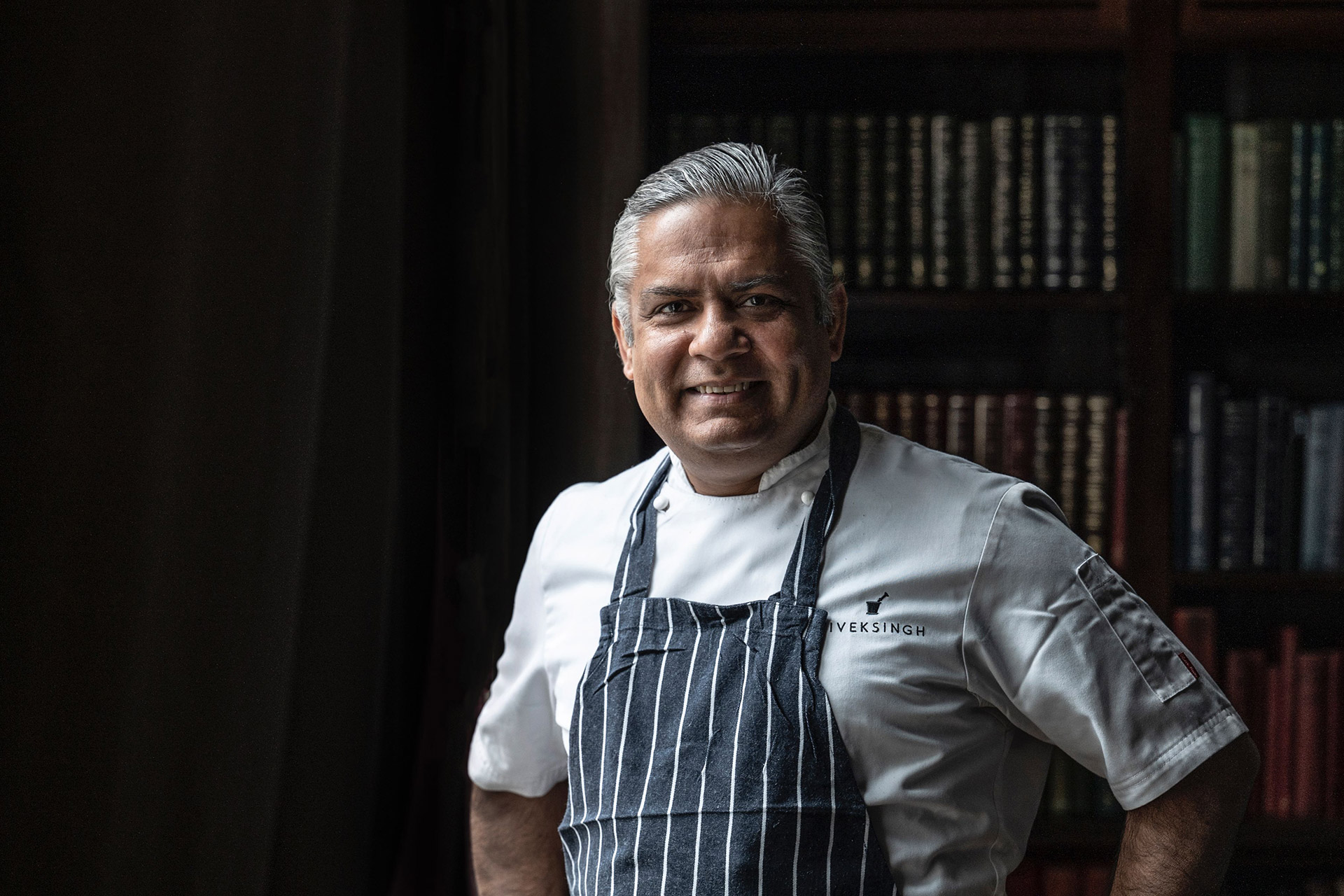
“It has been the story of the entirety of my 20 years in this county to try and dismantle the preconceived notions of Indian food or restaurants,” says Vivek Singh, one of the most respected chefs in the capital having made his name opening The Cinnamon Club in 2001, followed by an expansion of restaurants in Covent Garden, The City and most recently Battersea.
As he explains, his mission was not a simple one. Indian cuisine – so readily available from family-run takeaways across the country – became too much like a safe bet, and as Singh succinctly puts it, a place “ to go for a cheap meal on a Friday evening after six pints of lager” when, as he says, “it’s so much more”.
Singh’s ambition to change this evolved into an array of cookbooks, TV appearances and five restaurants, the most famous being The Cinnamon Club housed in the Grade II-listed former Westminster Library. Catering to flocks of government workers, given it’s just a stone’s throw from the Houses of Parliament, it soon made a name for itself offering modern upscale Indian cuisine in chic, original surrounds alongside a thoughtful selection of wines and creative cocktails. A far cry from the dimly-lit, white-tableclothed caves in which Brits were used to getting their curry fix.
Singh opened Cinnamon Kitchen in The City in 2008, followed by Cinnamon Bazaar in Covent Garden eight years later, an outpost in Oxford and then Battersea in 2018. Alongside his flurry of openings, Singh earned himself a Michelin star and became famous for his Anglo-Indian take on the cuisine of his childhood. Singh calls West Bengal home – which, to this day, remains heavily influenced by its former English occupation (Christian festivals are often celebrated alongside the Hindu calendar) – so naturally his food is influenced by cultures from both East and West and replicated seamlessly in all five of his restaurants.
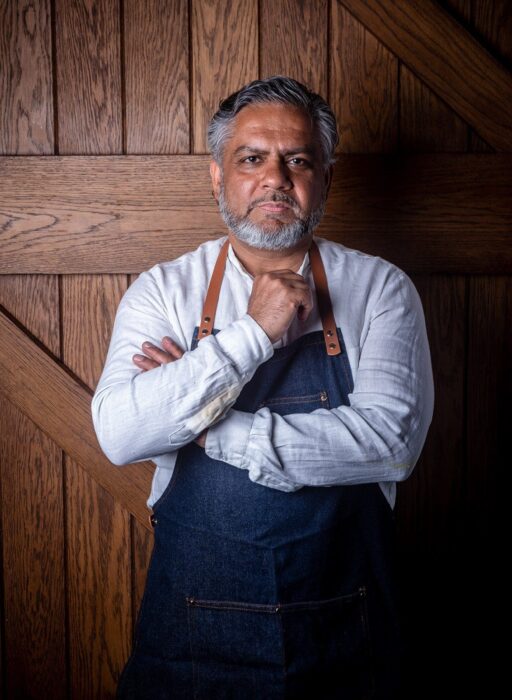
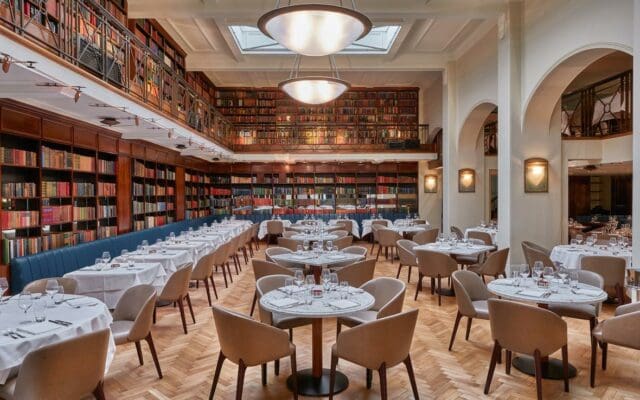
The Cinnamon Club, Westminster
The Cinnamon Collection’s interiors are an Indian cultural melting pot inspired by the country’s vibrant bazaars, midnight revelry and eccentric transport, from tuk-tuks to trains – for example, bar bites at the Battersea restaurant are similar to those found on the Delhi Jaipur Pink City Express route. Singh’s signature Old Delhi style butter chicken and tandoori spiced Balmoral Estate venison feature on the menu at The Cinnamon Club, while elsewhere you can find Koorgi style double cooked pork belly with masala mash, grilled Scottish scallops with varhadi techa spices, and black cardamom brûlée with sesame crisp.
A seasoned stalwart on London’s restaurant scene, Singh reveals the most valuable lesson he’s learned, what he looks for in young chefs and how Indian food is so much more than curry.
Most of my childhood memories are about food or lots of people around food, but it wasn’t until later on in my life that I decided to pursue a career in this industry. Whether it was small family meals cooked from scratch, or packed meals to school or larger community feasts, food was always at the centre of it all.
One of my earliest food memories is having tasted prawns for the first time at a Bengali wedding. I must have been seven years old and had never eaten prawns at this stage – we were about 210km off the coast, so it was not something that was commonplace. I remember this wedding to be, not the largest one I had been to, but certainly not a small wedding by any means as it still hosted around 400 guests. I remember how generous and hospitable those people were; they were literally force feeding everyone to have more of everything and again twice-over. But the thing that stuck with me from that day until now was the absolute divine taste of the prawn malai curry that I had. It was definitely one of the most delicious things I had eaten up until then and possibly one of the most delicious things I have ever eaten.
I started my professional cooking as a trainee with the Oberoi Hotels which meant that, during my training, I worked at a variety of restaurants. Starting with Taipei, which was a Chinese restaurant, Baan Thai – a Thai restaurant – and the Kandahaar and Maidens in Old Delhi, both Indian restaurants.
In Kolkata, I also did a stint at the Rotisserie, a French speciality restaurant at The Oberoi Grand. Later I headed up Gharaana, which was India’s most expensive restaurant when it opened in 1995, and was inspired by the cooking of the royal courts of India. Then I ran Surya Mahal in the Oberoi Rajvillas Hotel in Jaipur, before moving to London to open The Cinnamon Club in 2001.
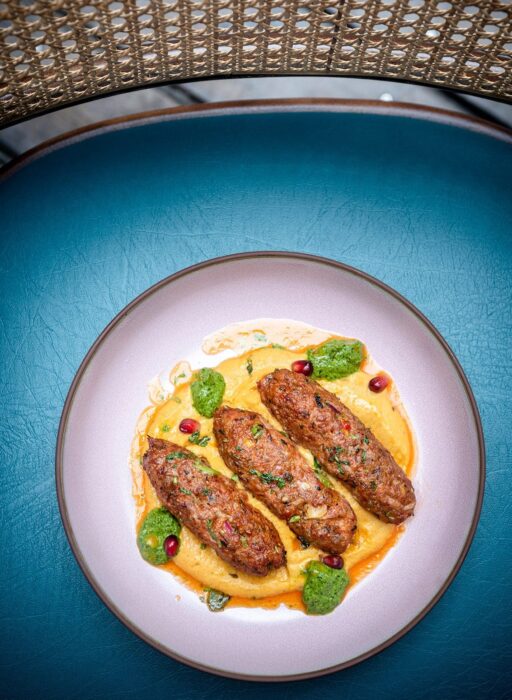
Lamb seekh kebab with coriander chutney
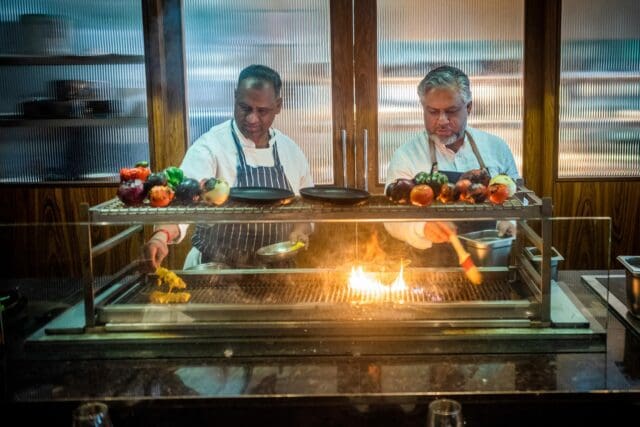
In my own career running up to the opening of The Cinnamon club, even working in India, I felt that there was more that could have been done with Indian food in terms of modernising it and pushing boundaries. When the opportunity to open The Cinnamon Club was presented, even as an outsider to the restaurant scene in London at the time, I could see that there was a tremendous amount of love for Indian food and culture in this country but there was still a wide opening for an Indian restaurant that would potentially set a new benchmark and elevate the experience. This would need to first change people’s expectation of Indian food.
Among things like seasonality, quality, finer presentation, the most important aspect to bring in was ambition, which is perhaps an ingredient that was not present in the Indian scene then. I felt that the rest of the Indian restaurants at the time were slightly different from the energy, the youth and the ambition that India itself as a nation is experiencing and I saw that as an opportunity.
It has almost been the story of the entirety of my 20 odd years in this county to try and dismantle the preconceived notions of Indian food or restaurants. For example, it’s a myth that Indian food is all about the curry and therefore quality ingredients do not matter; the idea that it costs less to produce and must therefore be cheaper; the notion that cooking with seasonal ingredients does not matter so everything should be available throughout the year, when the truth is that regional Indian cooking is all about hyper-seasonality.
I also don’t agree with the notion that Indian restaurants are places to go for a cheap meal on a Friday evening after six pints of lager, because it is so much more. Many people think Indian food is just about Tandoori or north Indian cooking, while, in reality, each region has speciality cooking techniques and recipes.
I am not sure if it is just about life in India, but it is definitely in all warmer countries: I feel like they live two lives while we live one. Whenever I am in India, I am always amazed by how much life there is on the street no matter what time it is. Even if it is past midnight, you will find so much more to do from the food to the music, to just the number of people on the streets. Someone could finish work at 9pm, have an hour-long commute and still find a wide number of options for food and drink. Sometimes, and often in the winters, I miss that in this country.
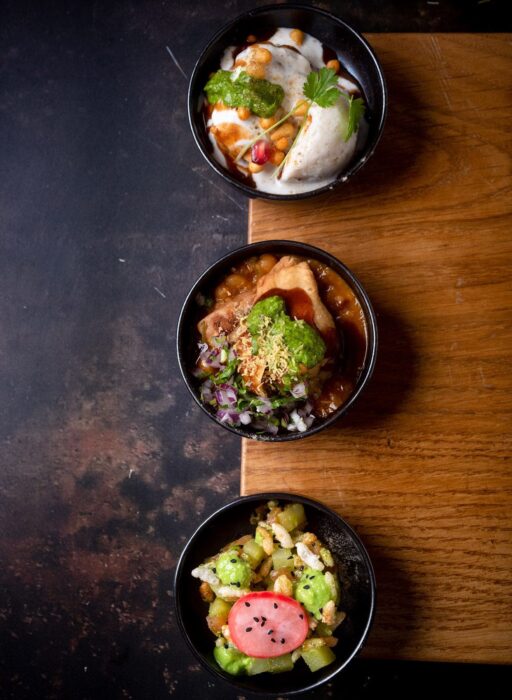

The Cinnamon Kitchen, The City
Our continuous search for the finest new ingredients that we may or may not have used before from our land, shores, or skies is the starting point of our menu development process. Once we have the hero ingredient in mind, we dive into our pan-Indian search for inspiration around the correct spices and cooking techniques and in doing so we come up with the final dish, which, even though it may be rooted in thousands of years of cooking history, still seems modern and current. In short, this is our process for the constantly evolving menus at The Cinnamon Club and that’s what keeps it new.
[That’s] a difficult one to answer. The answer has to be either an ingredient that I like or the season that we are in. Of the thousands of dishes that I have been involved in, I find myself particularly partial to the genre of game cooking which over the years, we have become well known for. I felt fortunate to be able to bring life back to a genre of Indian cooking that was slowly getting lost since the complete hunting ban in India. To be able to cook with grouse, pheasant, partridge, venison, and put it on the menus at The Cinnamon Club has provided my team and I an opportunity to revisit, recollect and in some cases even reimagine what it might have been like to eat in those days.
It also provided an opportunity for our audiences to experience something that would otherwise be lost and is not available to experience in other parts of the world. This connection between the past, present, and future is perhaps what makes game cooking my favourite. But, don’t make me pick a dish because I cannot.
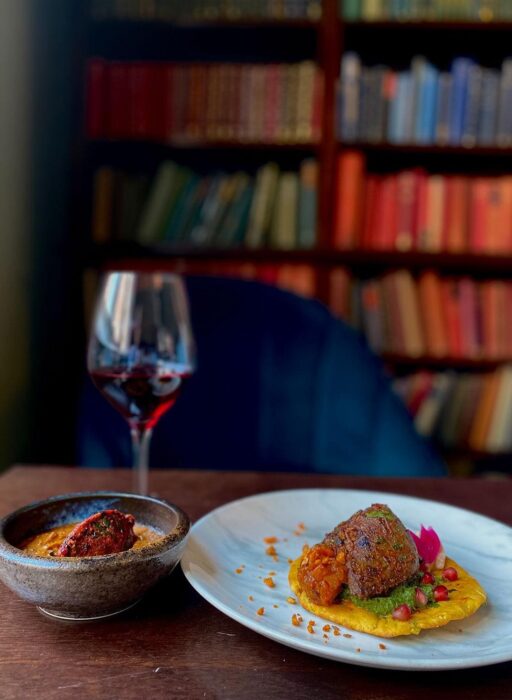
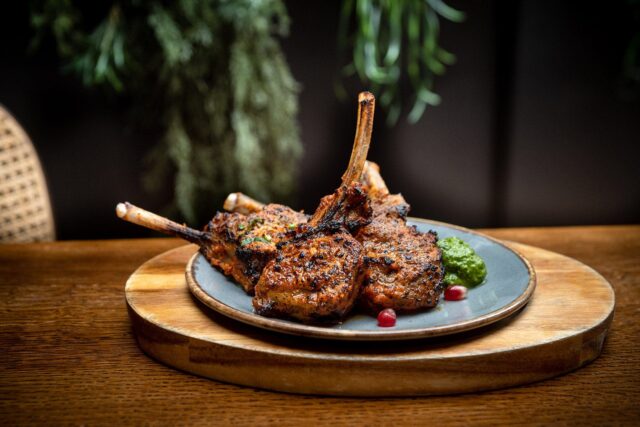
Chargrilled lamb chops with garlic, chilli and mint
[Wherever] you go in India, you will find a curry that is authentic to the region but will not be available anywhere else. I don’t think there is any one authentic Indian curry; what is authentic to one might as well be foreign to another. For example, take something like dal which you will find in some form across all parts of the country – even that will be completely different in parts of India from the ingredients to the cooking technique.
But I’m happy to make suggestions on where to eat. If you are looking for a delicious dal, I suggest Kricket’s burnt garlic dal. If you’re in the mood for Chettinad, there is no better place than Raju’s kitchen at Cinnamon Kitchen City and if you’re looking for a great Sri Lankan curry, then drop by Rambutan in Borough Market.
Not just at the moment, I’ve been impressed for a very long time by Adam Handling. To me, he personifies everything that an ambitious chef should be. He is constantly growing his team, pushing boundaries, challenging himself, writing books, doing television, winning Michelin stars, caring for the planet by championing zero waste – it showcases the multifaceted impact that any chef can have. He is the perfect example that a chef anywhere in the world should be following. More power to him.
“The most valuable lesson I learnt is that standing still is not an option. No matter what the scale of success, the price of not trying something new is much higher.”
Vivek Singh, founder and CEO of The Cinnamon Club
When I was younger, I used to look for a lot. Now, I look for very little. But if I have to look for one thing – more than education, experience, skill and ambition – I look for curiosity. The curiosity to taste, to learn more, to see what’s on the other side of the tent. It may seem the most basic of qualities, but in my experience, it’s this keyword that separates the best from the rest.
I can’t exactly put a finger on when it dawned upon me, but the most valuable lesson I learnt is that standing still is not an option. No matter what the scale of success, the price of not trying something new is much higher.
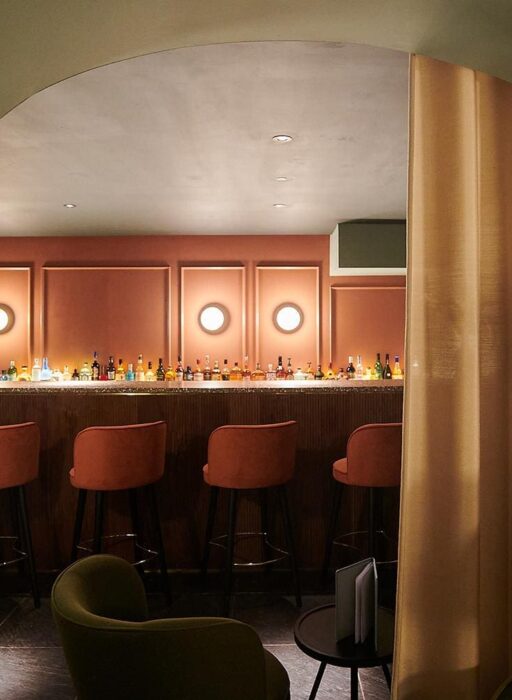
The Cinnamon Club cocktail bar
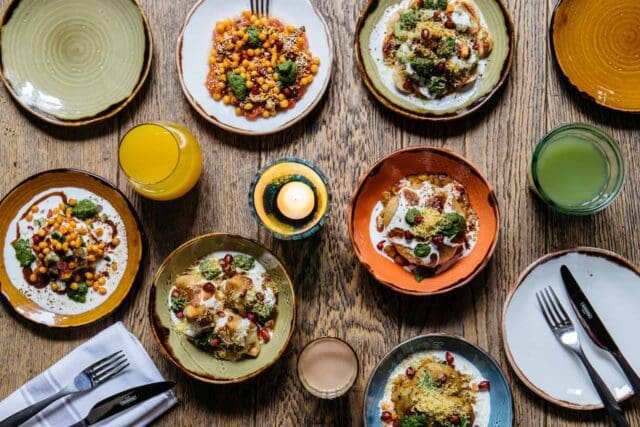
How else? I spend it at other people’s restaurants.
Looking back, I never set out to open as many restaurants or write as many books, or any of the other stuff. It was just an outcome of my journey. The ‘goal’ is to enjoy the journey and create a good experience for our audiences but especially for our teams.
Even now, looking back, it gives me so much pleasure when I see some of the talent that has emerged from our teams and restaurants and the amazing work they have gone on to do. Every one of them makes us proud. So, the goal is just to do more of the same, to enjoy our own and the success of these people.
Visit cinnamonclub.com
Read more: Meet the chef: Tom Booton of The Grill at The Dorchester
The post Meet the chef: Vivek Singh of The Cinnamon Kitchen appeared first on Luxury London.
